Was René Descartes a Victim of Skull Blasting?
Centuries after the philosopher’s death, lingering controversy over his remains highlights a macabre practice of profiting from the dead.
If you want to maximize your profit when selling a human skull, you’re going to need some dried peas. You can substitute millet or rice grains in a pinch. You’ll also need some water, and, of course, a skull. Turn the cranium upside down, fill it with the peas or grain, add the water, and wait. As the starches absorb the water and expand, the collagen-rich, fibrous tissue that keeps the cranial bones together will weaken. Eventually, the skull will crack neatly along its sutures (though the more delicate bits around the face may be destroyed in the process). Now, instead of just one object, you will have six to eight large pieces of bone to offer potential buyers.
Unethical and gruesome, yes, but the practice known as “skull blasting” was a canny way for Late Renaissance and Enlightenment-era purveyors of relics and curiosities to meet client demand. A recent controversial case study by Swedish researchers suggests that, during skull blasting’s heyday, even the most vaunted mortals could see their skulls split into parts and sold. In fact, the skull of René Descartes, they claim, ended up in pieces in private collections—and not in Paris, where an intact skull, believed to have belonged to the father of Western thought, has resided in honor for 200 years. As proof of their claim, the Swedes point to a piece of skull in Lund University, in southern Sweden, that they believe belonged to Descartes. While France and Sweden dig in their heels over which bones are authentic, the international disagreement illustrates how far humans—past and present—will go to own a piece of genius.
“The story symbolizes the trade in human remains from famous people, how common it was to open a coffin and steal a bone and then sell it,” says Per Karsten, director of the Lund University Historical Museum in Sweden and coauthor of the recent controversial paper. “Every rich, educated person in the 18th century wanted to have something to brag about in their library.”
Its origins are unrecorded, but skull blasting was sometimes used to produce specimens for legitimate anatomical study, beginning in the early days of modern medicine and continuing into the 21st century. In 2014, researchers in India tested the method, using mung beans, groundnuts, and lentils, to identify a cost-effective way of disarticulating a skull for study when other options are not available. They determined that using groundnuts offered both the most complete and fastest disarticulation, taking just a day. Of note, their alternative method, using a water-filled pressure cooker, “destroyed the whole skull.”
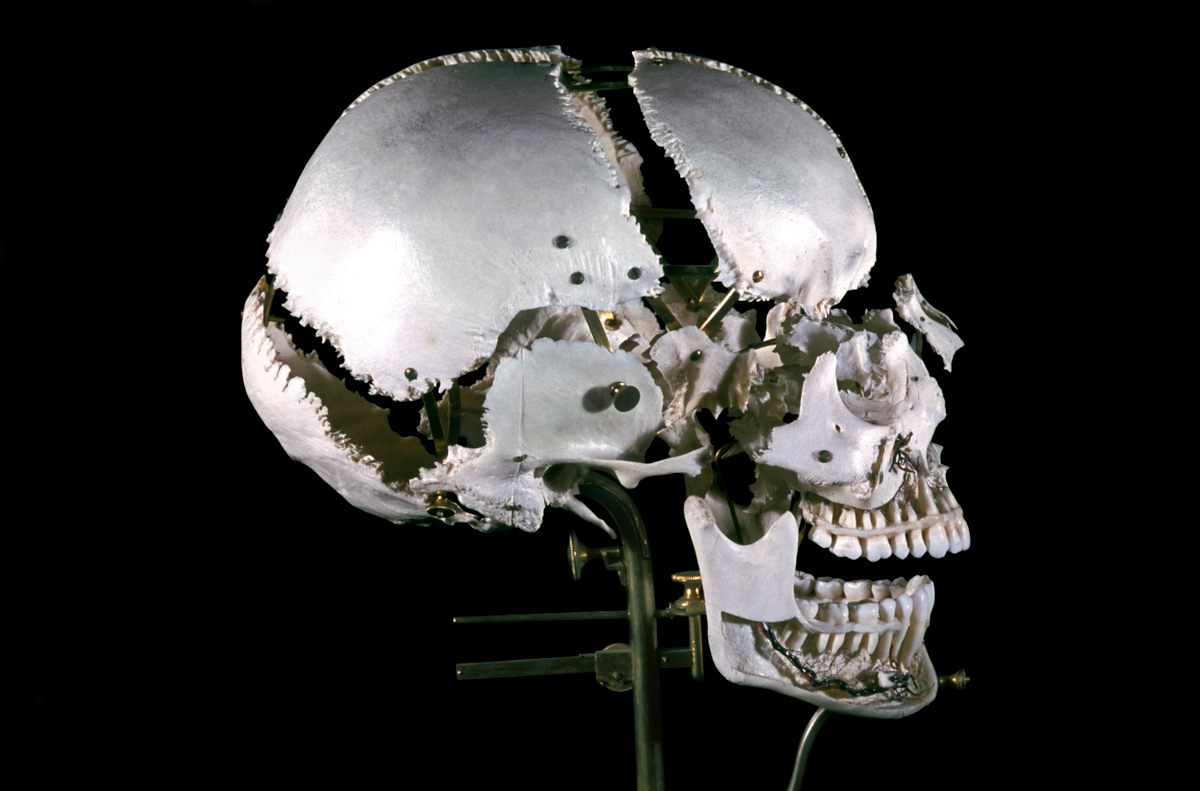
For more than a century, simply soaking or boiling the specimen—sans pressure cooker—was the preferred method for disarticulating a skull for anatomical study. The Beauchêne Method, named for the French surgeon who developed it in the early 19th century, was more time-consuming and fiddly, but it did preserve the smaller and more delicate bones. As a result, all 22 bones of the human skull could be then mounted in a way that allowed students to appreciate both the individual elements and their relationship to each other. It was the preferred approach to preparing skeletal specimens until it was replaced by plastic models and, more recently, 3D digital rendering.
Graverobbers and other profiteers of the dead were not so concerned with preparations intended to advance medical science and understanding, however. Skull blasting was a cheap, easy, and relatively quick means of boosting their supply to meet a growing demand. And, while the illicit nature of their work makes for poor recordkeeping, the practice appears to have coincided with the rise of the Wunderkammer.
In late 16th-century Europe, as humanism and an interest in the study of the natural world blossomed, having a Wunderkammer—German for “room of wonder”—became de rigueur first among royalty. These collections were, at least in spirit, a way to accumulate “the sum of man’s knowledge,” wrote Kathryn Jones, curator of decorative arts at London’s Royal Collection Trust, in her 2016 review of royal Wunderkammer history.

Royal advisors determined that the ideal contents of a Wunderkammer, writes Jones, should include items from nature as well as those that were handcrafted—particularly from afar—in addition to scientific instruments, mathematical tables, and other tools of enlightened minds. “Together these works created an empirical and humanistic view of learning,” she wrote. “But at the same time they showed the prince’s extensive powers over the natural world, as well as his trade links and his ancestral credentials as ruler.”
Of course, whatever was fashionable among royals was quickly adopted by the aristocracy and those aspiring to it. Soon, having a Wunderkammer in your estate’s library was a way to show both social status and intellect.
Wunderkammern—precursors to the modern natural history museum—often included human remains, acquired and displayed without regard for the dignity of the individuals. Numerous collection inventories list mummies and human bones. Skulls in particular had special significance, in part because they served as visually arresting memento mori, but also because skulls have long been seen as holding an individual’s identity and even spirit. And what better spirit to have in your collection of knowledge than that of the mighty Descartes?
So here, at the edge of the Age of Reason, is where we meet Monsieur Descartes, on his deathbed in Stockholm in 1650. He had traveled to Sweden, invited by Queen Christina, to present his innovative ideas to the court. He fell ill within weeks and died, and his remains were placed in an above-ground tomb in a modest graveyard.
What happens next depends on which narrative you believe, but one thing historians agree on is that the skull of Descartes did not rest in peace.

In the most widely accepted chronology, Descartes was disinterred in 1666, following a campaign by his countrymen to have his body brought home to France. The remains were reburied in the church Saint-Geneviève-du-Mont in Paris, where they stayed until the early 19th century (with a brief interlude during the chaos of the Revolution, when they were removed for safekeeping). Before reinterment in 1818, the coffin was opened, and onlookers saw there was no skull. One of those present was the pioneering chemist Jöns Jakob Berzelius, visiting from Sweden. In 1821, back home in Stockholm, Berzelius learned that a skull allegedly belonging to Descartes had been purchased at auction by a casino mogul—no doubt for the man’s Wunderkammer. Berzelius convinced the man to sell the skull to him so he could return it to France.
Berzelius, a committed empiricist, was confident that the skull belonged to Descartes because the evidence was literally spelled out for him. Someone had written across the forehead, in Swedish: “The skull of Descartes, taken by J. Fr. Planström, the year 1666, at the time when the body was being returned to France.” An archivist hired by France’s Académie des Sciences was also able to piece together a lengthy chain of custody for the skull.
The first link in that chain was indeed a man named Planström, one of the guards charged with keeping an eye over the remains in 1666, while they awaited transport back to France. When Planström died with debts unpaid, one of his creditors, a Stockholm brewer, was given the skull. Upon the brewer’s death, it passed to his son, and then, from there, a long line of collectors, assessors, and others, some of whom wrote their names, and sometimes lofty verse, on the skull. Eventually, the skull landed in the possession of scientist and explorer Anders Sparrman, whose collection was auctioned off following his death in 1820. From there it made its way, via Berzelius, to France, where it has been for two centuries. The skull resides at the Musée de l’Homme, separate from the rest of the remains.
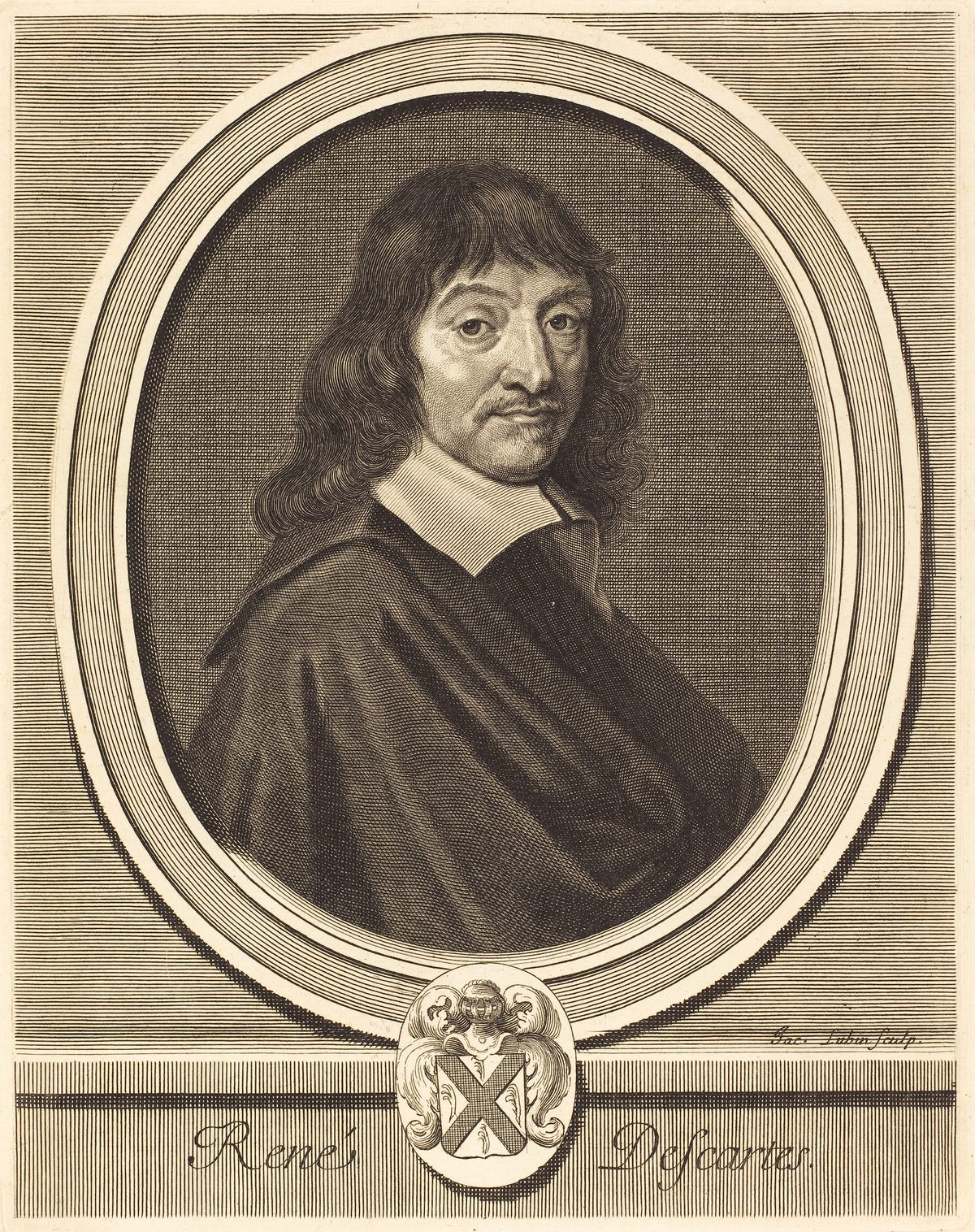
The problem with this skull, according to researchers at Lund University, is that it does not belong to Descartes. In 2020, Karsten and curator and archaeologist Andreas Manhag wrote “The true skull of Descartes? A source critical study,” a chapter in a book that traced the acquisition of some of Lund University Historical Museum’s collection. In their writings, the authors focus on the names written on the Paris skull, which have traditionally been interpreted as proof of its authenticity.
“They were totally convinced that this must be the skull of Descartes, because it said so,” says Karsten. Instead, he and Manhag believe the names of the previous alleged owners written on the Paris skull are evidence that it is a fake. “It is absolutely impossible that they could have owned this skull,” Karsten says.
Regarding the inscription declaring the skull as that of Descartes, the story of Planström stealing the skull in 1666 had been published around 1750 in the Swedish literary magazine Lärda tidningar, making the information public knowledge—and accessible to forgers.
According to Karsten and Manhag, of the six names of ostensible Swedish owners written on the Paris skull, there are issues with the authenticity of at least four of them. For example, one of the names, Olof Celsius, belongs to an 18th-century Swedish bishop. There is no contemporary record of Celsius owning the skull of Descartes, whole or otherwise. However, his wife, Andreetta Katarina Celsius, did inherit a piece of human skull labeled as belonging to Descartes, and, around 1780, donated it to Lund University. Whoever added Olof’s name, the theory goes, apparently assumed that he gained ownership of the skull when he and Andreetta married. But, says Manhag, “That was not the case, since it was specifically she that donated it to Lund.” And Andreetta’s piece of skull is pivotal to the Swedish researchers’ case.
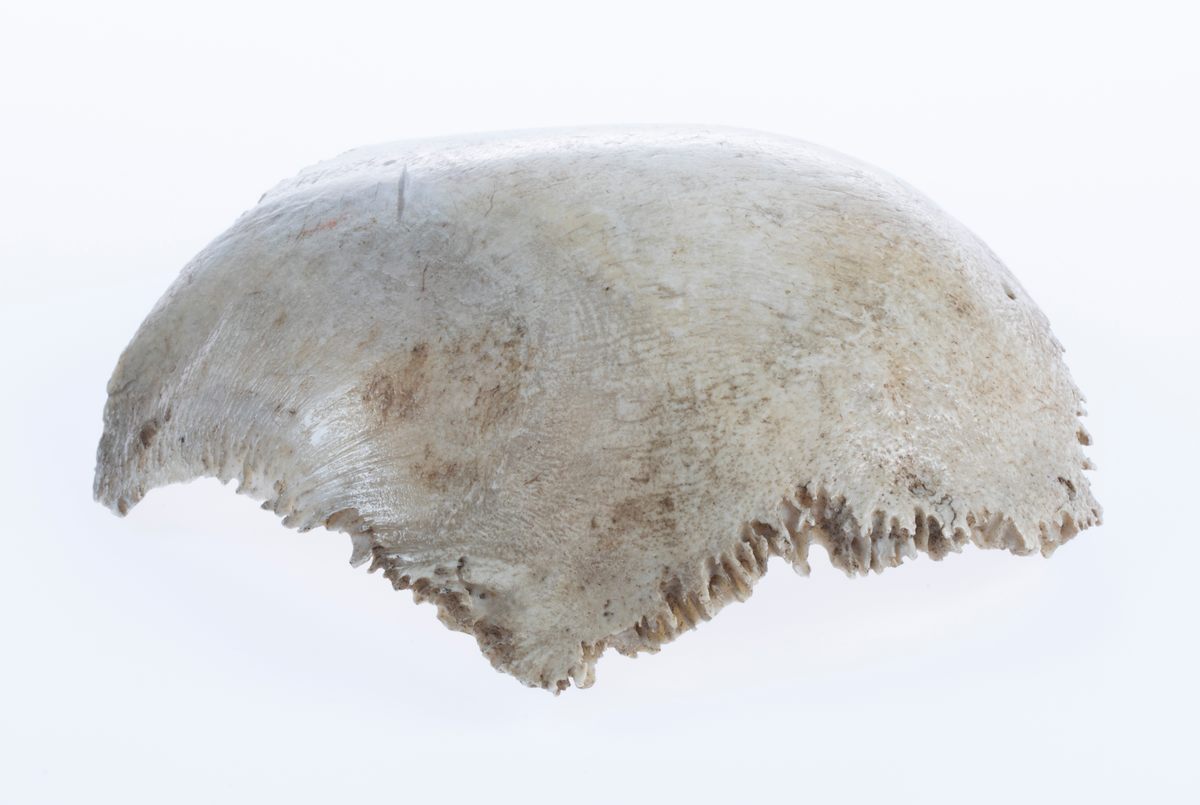
“We know the Paris skull is a fake, but everything says our piece of the skull is genuine,” Karsten says, referring to the palm-sized, grayish-white piece of parietal bone, from the upper left area of a human skull, that Andreetta Celsius donated to the university. The bone, formally known as LUHM 508, was acquired around the same time as a curious wooden vessel. The otherwise unadorned, cup-shaped container has a decorative skull on its lid; the cranial sutures are clearly rendered, illustrating the different parts of the skull, and the bone fits the container perfectly, says Karsten. “This was the vessel for keeping Mr. Descartes,” Karsten says, equating it to “a scientific relic.”
Inside the parietal bone, in Swedish, is the inscription “Cartesi–döskalla 1691. No 6,” or “the skull of Descartes, 1691, number 6.” The number six, says Manhag, suggests there were other pieces. This agrees with Swedish historical records that describe multiple pieces of skull, allegedly belonging to Descartes, bought and sold in private collections in the 18th century. Also, adds Manhag, the year 1691 is not mentioned anywhere as significant to Descartes as an individual. If someone wanted to create a forgery of the philosopher’s skull, Manhag says, “It would perhaps be better to choose the year of his death, exhumation, or something similar.” Instead, Manhag and Karsten believe 1691 was the year the skull of Descartes was blasted into pieces.
Karsten and Manhag agree that Planström likely took the skull of Descartes while he was guarding the remains in 1666. The year of his death is unclear, but while he breathed he ran up debts. It’s plausible to think either he or his creditors saw splitting the skull into pieces as a way to reap maximum gains from the asset. If Descartes was indeed the victim of skull blasting, it would explain 18th-century mentions of multiple Swedes owning different pieces of the skull during overlapping periods.
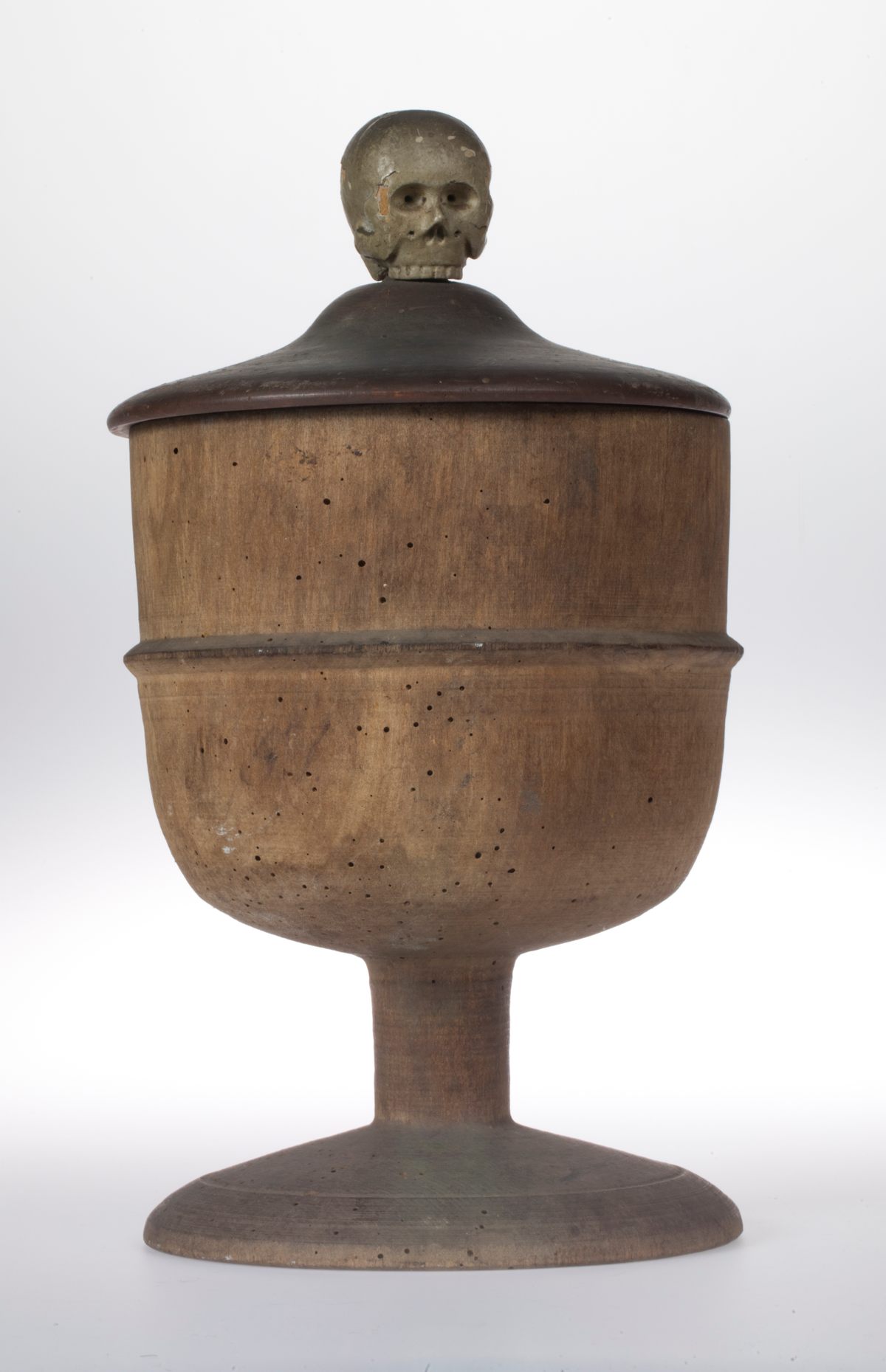
The Musée de l’Homme, where the Paris skull now resides, did not respond to multiple requests for comment. However, Philippe Charlier, a widely respected physician and anthropologist whom The New York Times dubbed “France’s most famous forensic sleuth,” has studied the Paris skull extensively, and feels the case is closed: Descartes is home.
Charlier says there is “excellent traceability of the skull” since the late 17th century, and cites the research of author Russell Shorto, laid out in the 2008 book Descartes’ Bones: A Skeletal History of the Conflict Between Faith and Reason, which built on the early-19th-century work of the archivist hired by the Académie des Sciences. Charlier dismisses the Swedish team’s work as “mainly based on local traditions [and] a questioning of long-established facts.”
While DNA could theoretically end the controversy, Charlier says it’s not an option. Extracting DNA from bone is always an invasive, destructive process, and the Musée de l’Homme, “forbids [it] for heritage reasons—not for fear of the result,” he says. Even if DNA extraction of the Paris skull was permitted, says Charlier, there is nothing to compare it with. Descartes has no known living descendants, and the bones reinterred in a Paris cemetery in 1818 have been exposed to moisture and contaminants over the centuries, degrading the genetic material beyond the current limits of analysis.
Charlier’s team has conducted multiple non-invasive examinations of the skull, including a 2017 “neuro-anatomical analysis” that used CT scanning to model elements of Descartes’ brain structure never before visualized. Over the years, says Charlier, “Our anthropological and forensic examination confirms the evaluation of sex, age at death, [and] geographical origin” of the Paris skull match that of Descartes. Craniofacial reconstruction based on the precise measurements of the skull’s features also provides, says Charlier, a “perfect correspondence” with Descartes as he appears in portraits painted by his contemporaries.
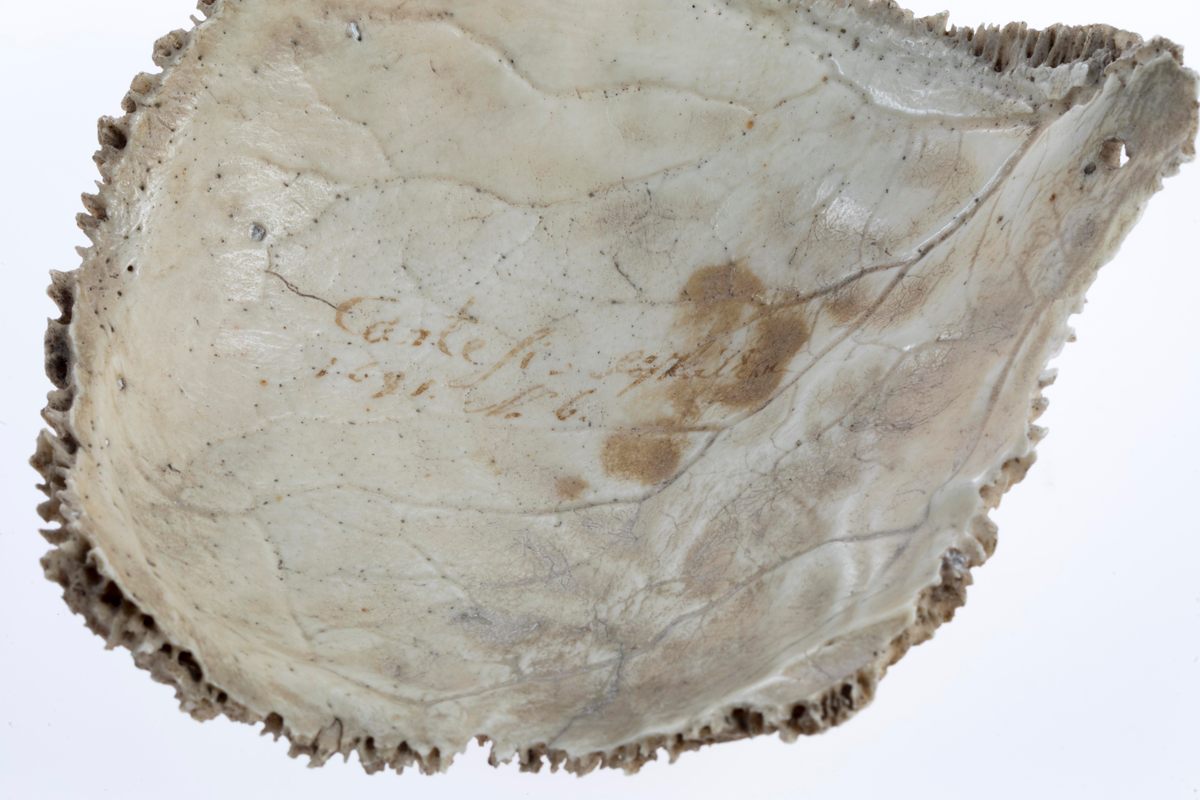
Lund University’s Karsten remains convinced his museum has a piece of the great Cartesian. “Mr. Descartes has been in Lund since 1780. I think it’s mind-blowing, this fantastic symbol of human reason, philosophy, history—the emergence of Western scientific thinking started with this man—and we have his skull. I absolutely love it!” Karsten declares.
Manhag is more cautious—at least about the authenticity of the Lund skull. “I am certain that the skull in Paris is a fake,” he says. “I cannot be certain that the one in Lund is genuine, but there is, in my opinion, nothing that indicates that it also would also be a forgery.”
Charlier, who has analyzed the alleged remains of a number of famous historical figures, from Richard the Lionheart to Joan of Arc, often exposing forgeries, understands the appeal of believing at least some of Descartes is still in Sweden.
“The more I study historical remains, the more I realize their geopolitical importance. Possessing it, or claiming its authenticity, despite the improbability sometimes, is of crucial importance in order to occupy geopolitical terrain,” Charlier says. “But it is thus: Scientific and historical evidence want that the skull of the philosopher-mathematician-physicist-musicologist is henceforth in Paris.”
While the question of what happened to the skull of Descartes remains open, one thing is known: People still want a piece of him in their room of wonder.
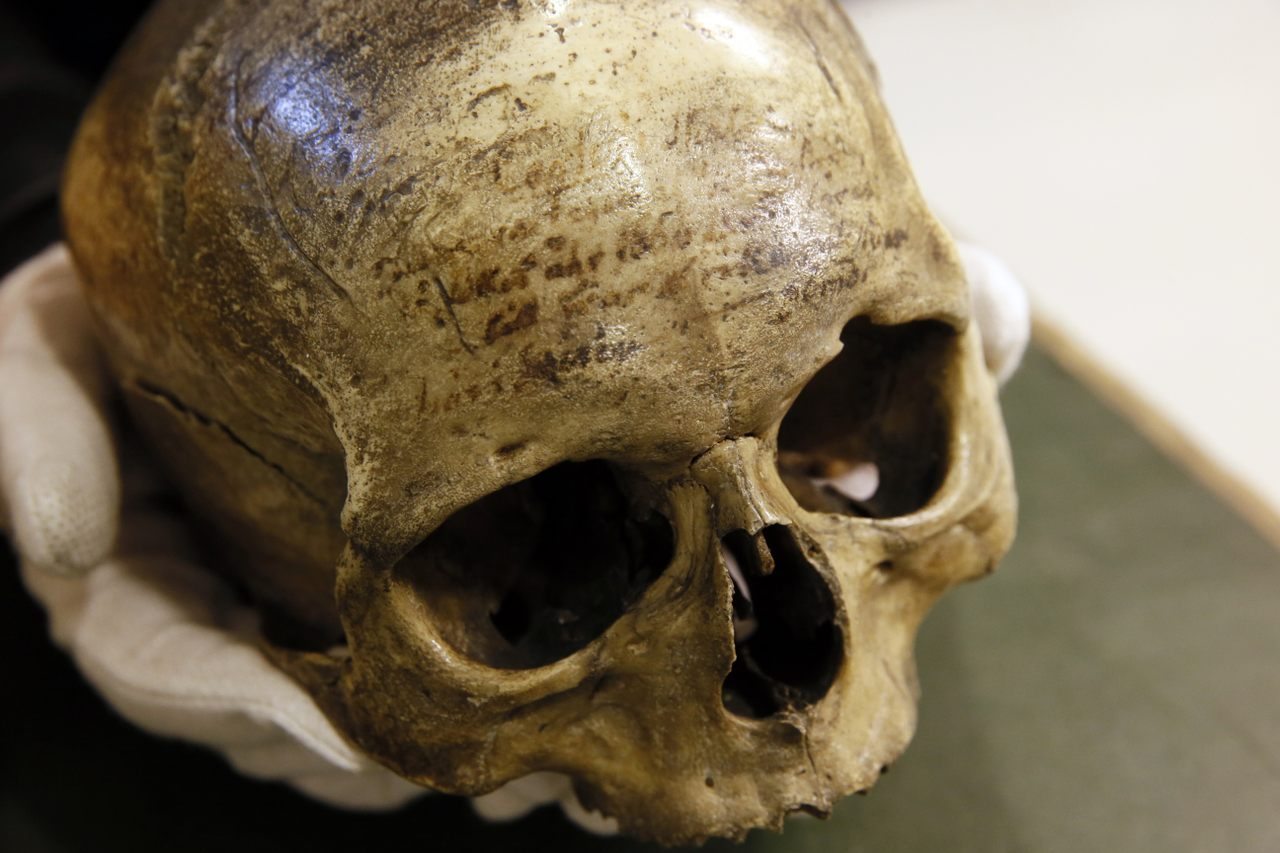































Follow us on Twitter to get the latest on the world's hidden wonders.
Like us on Facebook to get the latest on the world's hidden wonders.
Follow us on Twitter Like us on Facebook